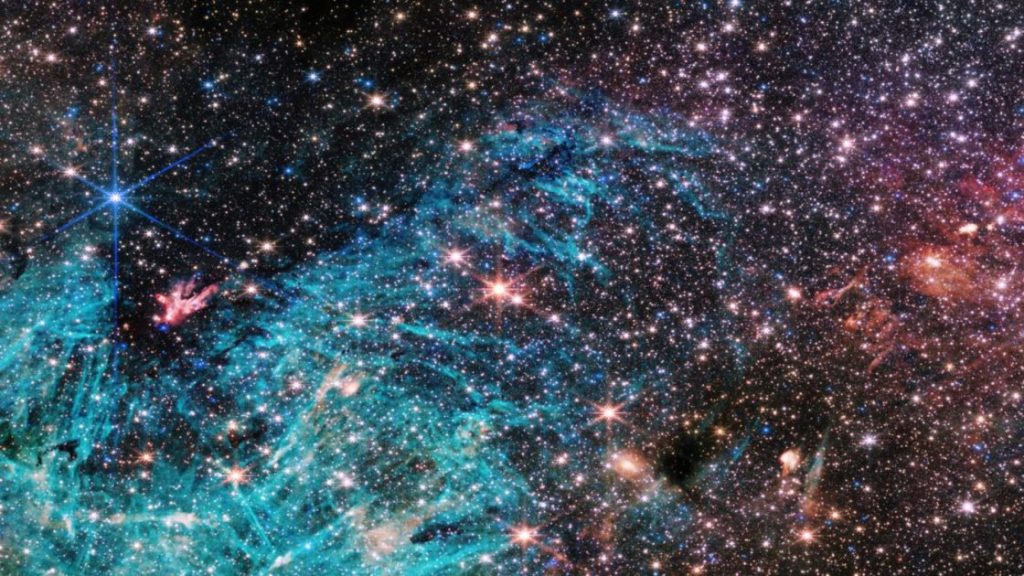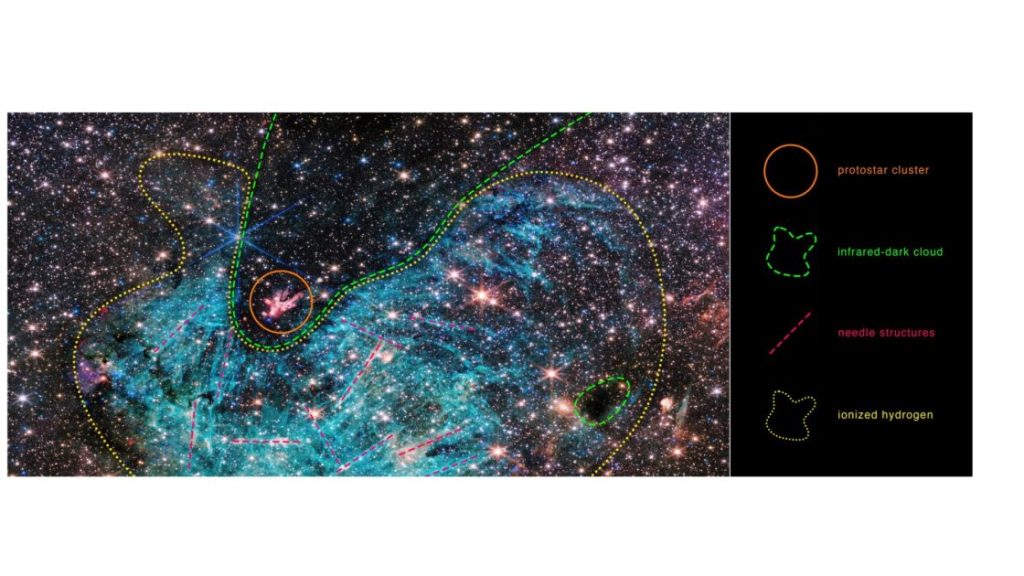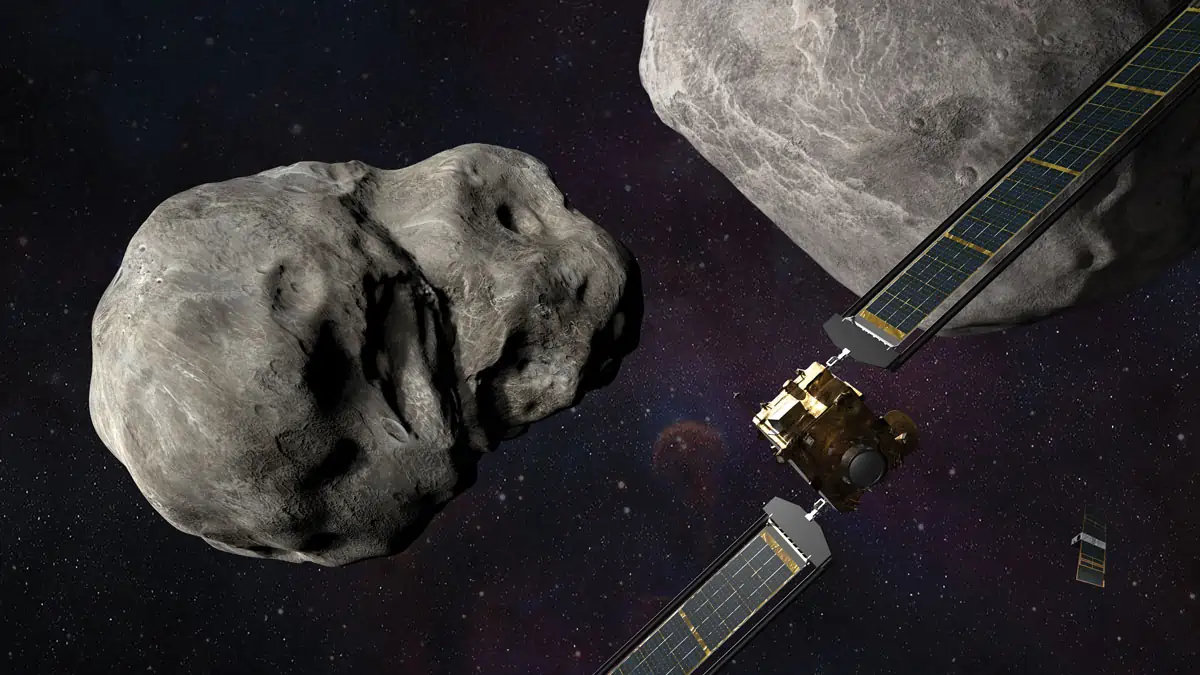Latest Webb image shows hidden features of massive stars at Milky Way’s center
NASA’s James Webb Space Telescope has sent a stunning image of the Milky Way’s galactic center. The image displays a portion of the dense central area, a never-before-seen view of the Sagittarius C (Sgr C) star-forming region, situated around 300 light-years from Sagittarius A*, the central supermassive black hole of the Milky Way.
According to the observation team’s principal investigator Samuel Crowe, an undergraduate student at the University of Virginia in Charlottesville, there’s never been any infrared data on this region with the level of resolution and sensitivity we get with Webb, so we are seeing lots of features here for the first time.
“Webb reveals an incredible amount of detail, allowing us to study star formation in this sort of environment in a way that wasn’t possible previously,” NASA reported Crowe as saying.

What we see in the above Webb image is an intensely attractive, crowded space filled with stars and vibrant clouds, expanding to a width that is over twice its height.
“The galactic center is a crowded, tumultuous place. There are turbulent, magnetized gas clouds that are forming stars, which then impact the surrounding gas with their outflowing winds, jets, and radiation,” Rubén Fedriani, a co-investigator of the project at the Instituto Astrofísica de Andalucía in Spain is reported as saying.
The Webb image portrays a funnel-shaped area, notably darker than its surroundings, indicating a lower stellar concentration. It widens at the top edge and narrows towards the bottom. Within this darker region, a small clump of red and white shoots out streamers upward and leftward. Surrounding the lower portion of this dark area is a large cyan-colored region forming a rough U shape. This cyan region is filled with intriguing needle-like structures that lack a uniform orientation. In addition to this, the right side of the image is dominated by clouds of orange and red hues, accented with a purple haze.
The Near-Infrared Camera (NIRCam) instrument on the Webb has revealed approximately 500,000 stars within this Sagittarius C region, accompanied by some yet-to-be-explained features. Of particular interest are the protostars – stars in the process of formation and accumulating mass. These protostars, including one over 30 times the mass of our Sun, exhibit outflows that glow within an infrared-dark cloud.
Interestingly, the cloud housing these protostars is so dense that the light from stars behind it cannot reach the Webb telescope, creating the illusion of reduced crowding despite being one of the most densely packed areas within the image.

The image also reveals large-scale emission from ionized hydrogen surrounding the dark cloud’s lower side, shown in cyan. This emission typically results from energetic photons emitted by young massive stars. Still, the extensive region displayed by Webb’s image has presented a surprise that warrants further investigation. Furthermore, the needle-like structures within the ionized hydrogen, seemingly chaotic in their orientations, pique astronomers’ curiosity and prompt deeper scrutiny.
This view into the galactic center opens doors to study star formation, turbulent gas clouds, and the impact of emerging stars’ winds, jets, and radiation on the surrounding environment. Webb’s data in this extreme environment provide a unique opportunity to explore the mysteries within the tumultuous galactic center.
“Webb has provided us with a ton of data on this extreme environment, and we are just starting to dig into it,” Fedriani added.
Located around 25,000 light-years from Earth, this galactic center proximity allows Webb to analyze individual stars and star formation processes more precisely. What astronomers aim to understand from the Webb images is if the formation of more massive stars is favored in the Milky Way’s center compared to its spiral arms’ peripheries.
According to astronomers, the importance of this image is truly profound. Understanding massive stars and their role in producing heavy elements within their nuclear cores is like decoding a significant portion of the universe’s origin story.
“Massive stars are factories that produce heavy elements in their nuclear cores, so understanding them better is like learning the origin story of much of the universe,” Crowe said.
The James Webb Space Telescope stands as a leading space observatory. It uncovers mysteries within our solar system, gazes at distant worlds around various stars, and explores the enigmatic structures and origins of our universe and our position within it. This collaborative international program is led by NASA in partnership with ESA (European Space Agency) and the Canadian Space Agency.


